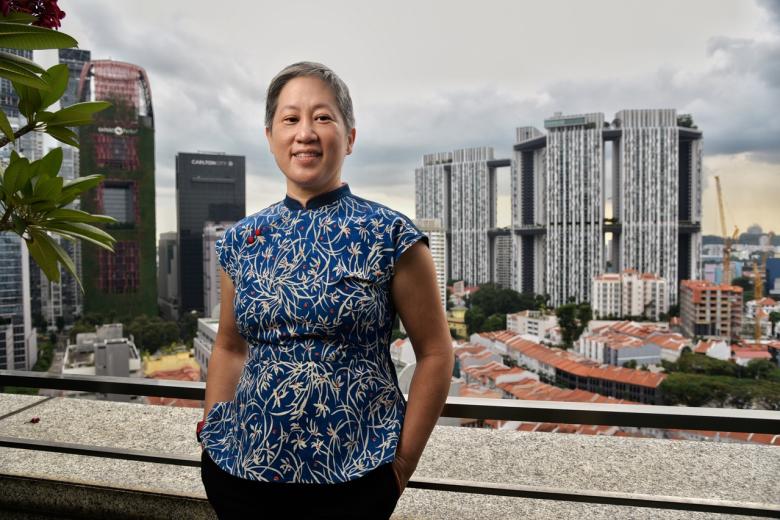 SINGAPORE – Working from home may be the most dramatic change to our lifestyles recently, but Singapore’s planners, working on a 50-year horizon and beyond, are not taking it as a given that hybrid home-office arrangements are here to stay.
SINGAPORE – Working from home may be the most dramatic change to our lifestyles recently, but Singapore’s planners, working on a 50-year horizon and beyond, are not taking it as a given that hybrid home-office arrangements are here to stay.
The uncertainty of its long-term impact on office space demand underscores the need for Singapore’s plans to be flexible, said the Urban Redevelopment Authority’s (URA) chief planner Hwang Yu-Ning.
In an interview with The Straits Times on Feb 21 on URA’s ongoing long-term plan review, Ms Hwang said: “(Work from home) will impact office space in the future and where to locate the office space.”
“So we are working on different possible scenarios, because we don’t know the extent to which this will sustain over time,” she said, adding that the uncertainty underscores the importance of providing options for different possible futures.
For instance, should a concentrated Central Business District (CBD) be the way forward in the future, Singapore has more space in Marina South to expand its CBD.
But if a polycentric model is favoured, then Singapore will look into expanding its suite of regional centres, such as building a new node in Paya Lebar Air Base after it is vacated, to add to nodes such as Woodlands, Tampines and Jurong Lake District.
Still, even if working nodes are decentralised, Ms Hwang said CBD office space is likely to remain popular among firms – and this would benefit Singapore.
“For Singapore as a hub, we still want to make sure that we do have a vibrant city centre,” she said, adding that the civic district’s arts and culture offerings, as well as its food and beverage options are important in keeping Singapore an attractive business location internationally.
Ms Hwang, who is 53 and has been the URA chief planner since October 2017, said existing tools can be used to keep the city centre vibrant while budgeting for flexibility and future uncertainty.
One example is changing the approach taken towards white zones in district planning.These zones were introduced in 1995 to inject vibrancy in the office-dominated CBD and Marina Bay by allowing mixed-used developments that include housing and hotel functions.
“But now as a concept and as an approach the white zone is intended to give that flexibility to adjust to the changing trends of work from home, the sizing of the CBD versus different polycentres.”
The pandemic also brought home two things for planners, Ms Hwang said.
One, it affirmed Singapore’s earlier approach towards creating self-contained neighbourhoods, which allowed people to access essential amenities when movement curbs were in place.
But it also revealed areas for improvement.
An unfinished artist’s impression of potential future reclamation along East Coast that Prime Minister Lee Hsien Loong presented in August 2019.PHOTO: PRIME MINISTER’S OFFICE “The thing that we didn’t cater for as much was the ‘work near home’ type of spaces.Because the idea was that if you needed to work near your place, it would be at one of these polycentres (such as) one-north and Punggol Digital District,” she said, referring to commercial centres outside of the CBD that were aimed at bringing work closer to homes and ease congestion in the city centre.
Work from home has shown that many people may not always have a conducive environment to work in at home, so the URA is looking to introduce spaces to work near home, possibly as close as the neighbourhood coffee shop or community centre, she said.
The authority is currently at the tail end of a year-long public consultation exercise as part of the long-term plan review, which takes place once every decade.
Each long-term plan will guide the nation’s land development for the next 50 years and beyond, and the latest plan is slated for exhibition and public feedback in the middle of this year.
Even as the plan is now being reviewed, Ms Hwang said planners are keeping their eye on two sectors that have seen a spike in popularity during the pandemic – e-commerce and food delivery.
In both areas, she said the current focus is on optimising the use of existing infrastructure to meet demand for deliveries and minimising the number of trips taken to make them.
More On This Topic New town centred on Paya Lebar Air Base site to be developed in stages, allowing for flexibility Decades-old plan to reclaim island for housing could be updated to tackle rising sea levels Last year, URA and several other government agencies announced that they were trialling courier hubs in Housing Board carparks, where delivery personnel would have the space to sort parcels, and from which parcel walkers could pick up and deliver items.
This could potentially reduce the vehicle volume in residential areas.
Asked if drone deliveries could become commonplace – participants at facilitated discussions on the long-term plan review suggested installing drone-friendly infrastructure in housing estates – Ms Hwang said it is on the URA’s radar, but not something that can take off soon.
Going skywards could help take traffic off the roads, but she said privacy concerns have to be accounted for, and the currently limited payload of drones do not yet make such deliveries economical.
Ms Hwang said planners are also keeping tabs on businesses that are gaining popularity such as co-living spaces and dark kitchens, where food is sold purely through deliveries or pickup.
Ms Hwang said existing tools can be used to keep the city centre vibrant while budgeting for flexibility and future uncertainty.ST PHOTO: DESMOND WEE She said current policies and infrastructure have thus far accommodated the needs of these businesses, though the authorities are engaging operators to better understand their business models and requirements.
The traffic needs of dark kitchens may require scrutiny, for example, if they are located in areas not designed for a high volume of delivery riders.
Beyond these emerging sectors, Ms Hwang said URA will press on with planning for known trends such as the ageing population.It will also look into rolling out more integrated facilities that serve multiple uses and optimise land use such as Marina Barrage and Our Tampines Hub.
She said watching these trends and devising novel solutions will be a continuous process for URA’s planners even when the current long-term plan review is completed.
“We know that things will change and we will need to then further adjust the plans along the way,” she said.
“So the planning is not static, we can’t keep using the same version.
We have to keep bringing the version up to date based on new trends and new developments.”
The long-term plan review will culminate in an exhibition in the middle of this year.
In the meantime, the public can continue to share their feedback and ideas at this website.
More On This Topic Pine Grove land parcel launched for sale: URA A future without carparks at home: URA sets out possibilities for a driverless vehicle city Join ST’s Telegram channel here and get the latest breaking news delivered to you..
